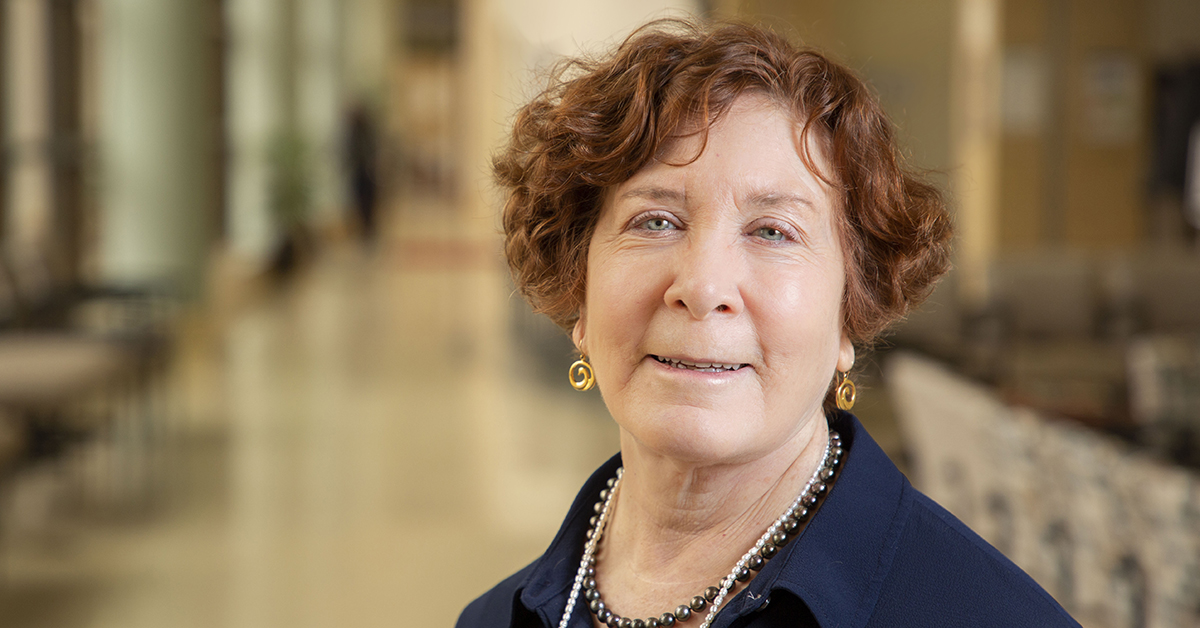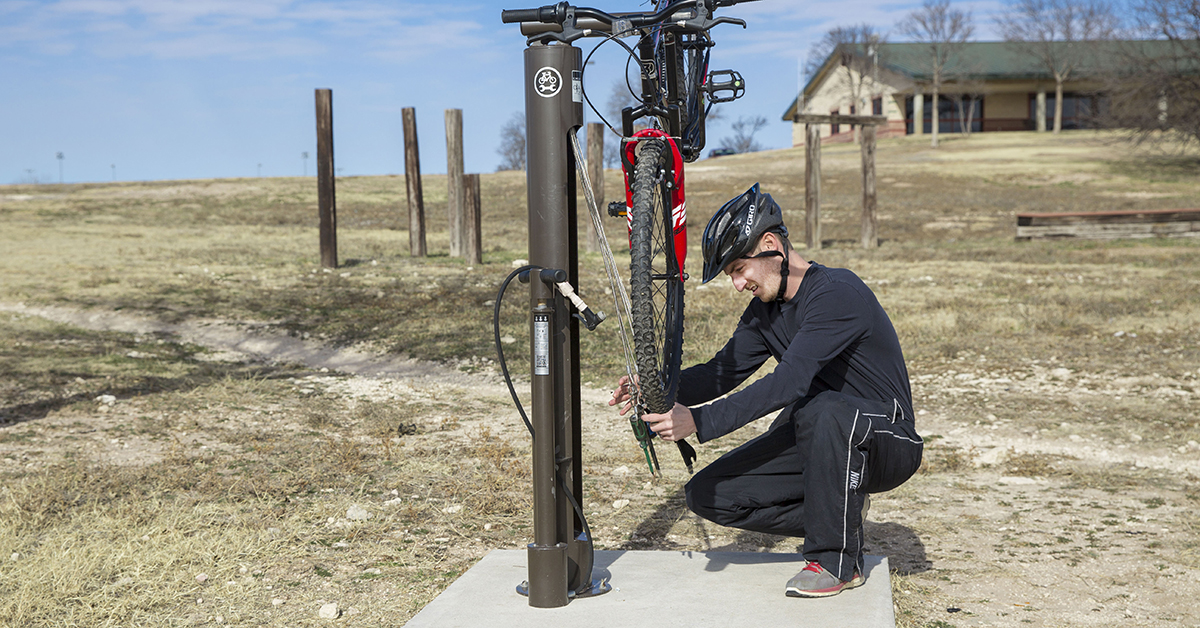Public Health Spans the Health Care Spectrum
What is public health and how is it related to other health care disciplines like medicine, nursing, pharmacy and health professions?
In a 1920 article he penned for Modern Medicine, noted American bacteriologist and public health expert Charles-Edward A. Winslow described public health as "the science and art of preventing disease, prolonging life and promoting human health through organized efforts and informed choices of society, organizations, public and private, communities and individuals."

Theresa Byrd, Dr.P.H., associate dean and chair of the TTUHSC Department of Public Health.
In a more succinct definition, Theresa Byrd, Dr.P.H., says public health practitioners protect the population as a whole rather than individual patients.
“Our focus is on prevention,” Byrd says.
Byrd, associate dean and chair of the TTUHSC Department of Public Health, said public health practitioners concentrate on three core functions: assessment, assurance and policy.
“Assessment means understanding what is happening within a community or a health care system to make its population ill or healthy,” Byrd explains. “Assurance is establishing an environment where people can be healthy. This includes assuring the population that there is health care, but also that there is a clean environment, access to food and exercise spaces, etc. The constructed environment and urban planning play into this aspect of public health. Policy means public health practitioners are responsible for making, advocating for and — in some cases — enforcing health policies.”
Julie St. John, Dr.P.H., associate chair and assistant professor for the TTUHSC Department of Public Health on the Abilene campus, defines public health as anything that has to do with basic human needs like air, water, food, shelter and safety.

Julie St. John, Dr.P.H., associate chair and assistant professor for the TTUHSC Department of Public Health at TTUHSC Abilene.
“Given my broad definition, public health is literally related to everything,” St. John says. “So, health care is essentially the art and science of diagnosing and treating disease and illness, while public health is identifying, preventing and addressing threats to our health, whether those are behavioral, genetic, environmental or biological threats.”
St. John says it’s a common misconception that the scope of work for public health practitioners is limited to vaccinations, sanitization or clean drinking water. And though public health includes all those things, she says there is so much more to the field that most people just don’t realize.

A common misconception is that the scope of work for public health practitioners is limited to vaccinations, sanitization or clean drinking water.
“Public health includes building neighborhoods with walking and biking trails where people can be healthy, planting vegetation that uses the least amount of water and provides the most amount of shade and creating indoor environments that promote health,” St. John explains. “That can include making sure there are drinking fountains with fillable water bottle spouts, stairs at the front entrances, lots of natural light, standing desks that promote more movement during the day, having healthy physical activity and nutrition policies at schools and workplaces, etc.”
St. John said establishing good public health practices includes people from all professions, like architects that understand the connection between well-designed buildings and healthy living.

Public health also includes building neighborhoods with walking and biking trails where people can be healthy.
“It also includes people like landscape architects that understand water conservation and he need for shade to protect our skin from melanoma, one of the deadliest cancers that is considered to be preventable in approximately 90 percent of cases; and engineers who look at designing environments and equipment that support and promote good health and healthy behavior,” she adds. “The list goes on and on."
Because of the misconceptions, Byrd says it’s important to teach student that public health practitioners are very interdisciplinary and work together as a team. Providing health care, she points out, is just one component of making a population healthier.
“A larger part of what promotes a healthy population is the society and our approach to health and wellness,” Byrd says. “As far as health care is concerned, our students learn about the management of health care systems, making budgets, planning, etc. Many of our students are caregivers and hope to use the MPH to expand what they do. We also focus our students on the social determinants of health and ways we can impact conditions in which people can be healthy.”
As a public health practitioner, Byrd enjoys working with communities and helping them figure out how to change health conditions. As a teacher, she loves seeing students “get it,” especially when they discover that public health is not just about health care, but encompasses things like education, society, income, location and so much more.
“Public health is such a dynamic field,” Byrd emphasizes. “We have many disciplines, like behavioral sciences, environmental health, epidemiology, management and policy and biostatistics. All of our students get background in each of these disciplines, and then they tend to focus on one area.”

Public health practitioners work as a team with other professionals such as landscape architects that understand water conservation and the need for shade to protect our skin from melanoma.
At the end of the day, St. John says the department’s mission is to provide future health care and public health professionals from all sectors and careers with the knowledge and skills to prevent disease, injury and illness, and to improve community health status and quality of life. She and her department colleagues meet this mission through classroom instruction and field experiences where students learn practical skills related to improving population health.
For example, she says, students learn how to carry out health status assessments by conducting key informant interviews, working with focus groups, administering surveys and using secondary data. She says those skills are critical because learning how to access a community’s needs and strengths can be useful in any field.
St. John says she continues to be passionate about public health because the field is innovative and impacts a population’s health at the community level.

"There are many possibilities for creativity and innovation in public health."
“There are many possibilities for creativity and innovation in public health,” St. John says. “I’ve seen how public health initiatives can literally change lives and improve the health of entire families and communities though one initiative, and I love teaching and helping others to freely explore, research and create. In the realm of public health, we are limited only by our imaginations, and that motivates me.”
- In March 2014, TTUHSC established a Department of Public Health and a Master of Public Health (MPH) degree program within the Graduate School of Biomedical Sciences. The first MPH classes were held six months later.
- Housed on the university’s Lubbock and Abilene campuses, TTUHSC’s MPH program emphasizes public health competencies and the integration and application of those competencies to public health practice. To date, there have been 56 graduates from the program, including 38 MPH students and 18 M.D./MPH students. The department also has several other programs under development.
- In September 2016, TTUHSC cut the ribbon on a new Department of Public Health building located on the Abilene campus. The following August, the department was renamed the Julia Jones Matthews Department of Public Health to honor Ms. Matthews, a longtime supporter of the Abilene community and TTUHSC.
- Nearly two years later, in July 2018, TTUHSC was notified by the Council on Education for Public Health that the MPH program had achieved accreditation until 2023. The council is the nationally recognized accrediting body for schools of public health and public health programs. TTUHSC’s program, which offers the MPH degree classes on campus or online, is the first school or program to undergo the accreditation process under the council’s newly revised guidelines.
Related Stories
Celebrating Veterans: TTUHSC’s General Martin Clay’s Legacy of Service and Leadership
From his initial enlistment in the Army National Guard 36 years ago to his leadership in military and civilian health care management roles, Major General Martin Clay’s career has been shaped by adaptability, mission focus and service to others.
Texas Tech University Health Sciences Center School of Nursing Named Best Accelerated Bachelor of Science in Nursing Program in Texas
The TTUHSC School of Nursing Accelerated Bachelor of Science in Nursing (BSN) program has been ranked the No. 1 accelerated nursing program in Texas by RegisteredNursing.org.
TTUHSC Names New Regional Dean for the School of Nursing
Louise Rice, DNP, RN, has been named regional dean of the TTUHSC School of Nursing on the Amarillo campus.
Recent Stories
The Ph.D. Programs that Shape Health Care
The Graduate School of Biomedical Sciences Ph.D. programs at TTUHSC provide the foundation, mentorship and research opportunities you need to pursue groundbreaking work.
Finding Your Future: Master’s Programs at the Graduate School of Biomedical Sciences
At the Graduate School of Biomedical Sciences, you will gain hands-on experience, work alongside expert faculty and collaborate in small, supportive classes that help you thrive.
Making Mental Health a Priority in the New Year
Sarah Mallard Wakefield, M.D., a psychiatrist with Texas Tech Physicians, talks about strategies to combat widespread and growing anxiety.
